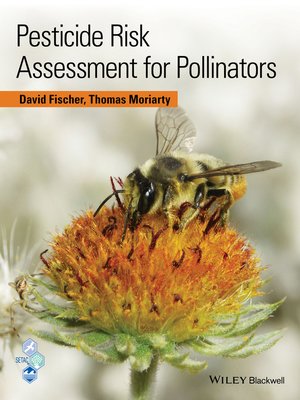
Sign up to save your library
With an OverDrive account, you can save your favorite libraries for at-a-glance information about availability. Find out more about OverDrive accounts.
Find this title in Libby, the library reading app by OverDrive.



Search for a digital library with this title
Title found at these libraries:
| Loading... |
Pollinators play a vital role in ecosystem health and are essential to ensuring food security. With declines in both managed and wild pollinator populations in recent years, scientists and regulators have sought answers to this problem and have explored implementing steps to protect pollinator populations now and for the future. Pesticide Risk Assessment for Pollinators focuses on the role pesticides play in impacting bee populations and looks to develop a risk assessment process, along with the data to inform that process, to better assess the potential risks that can accompany the use of pesticide products.
Pesticide Risk Assessment for Pollinators opens with two chapters that provide a biological background of both Apis and non-Apis species of pollinators. Chapters then present an overview of the general regulatory risk assessment process and decision-making processes. The book then discusses the core elements of a risk assessment, including exposure estimation, laboratory testing, and field testing. The book concludes with chapters on statistical and modeling tools, and proposed additional research that may be useful in developing the ability to assess the impacts of pesticide use on pollinator populations.
Summarizing the current state of the science surrounding risk assessment for Apis and non-Apis species, Pesticide Risk Assessment for Pollinators is a timely work that will be of great use to the environmental science and agricultural research communities.






